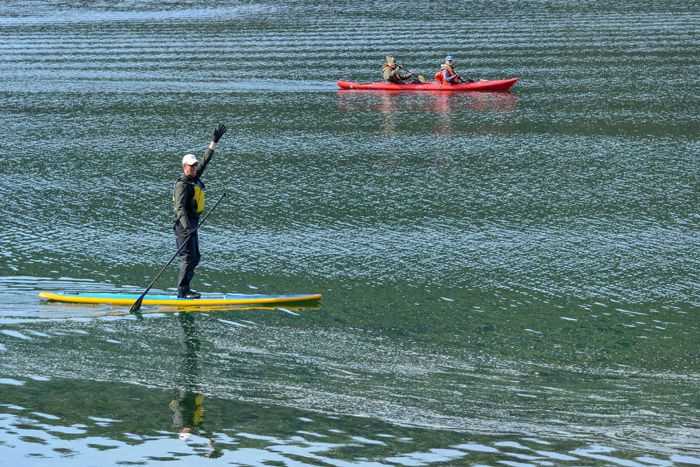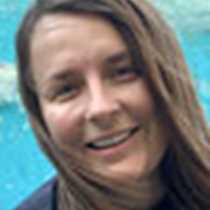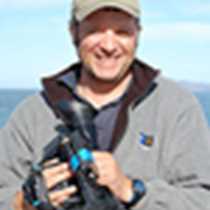The wildlife sightings onboard National Geographic Quest continue to amaze guests, staff, and crew. This morning as we entered a small bay on the southeast corner of Chichagoff Island, we sighted not one, but five different coastal brown bears as well as two Sitka black-tailed deer. Three of these bears were in a group comprised of a mother and two cubs a little over a year old, all busy foraging in the meadows along the bay’s edge. All of this greatness occurring before breakfast!
Once anchored, we went ashore to explore the bay by land and sea. Nine brave souls took to the stand-up paddleboards while others kayaked and the undersea team conducted scuba operations. Those that ventured ashore were treated to a walk down an unpaved road that was originally used to transport logs from the forest to a pier large enough to transport the felled trees to larger ports. One of the most intriguing creatures found on these hikes was a variety of banana slug with an unusual ghostly white complexion. Following our extended hike, we left the road and walked through a meadow at the head of the bay, walking along a salmon stream and sighting a couple more brown bears from afar.
Sitkoh Bay is an area that has had a taste of all major historical developments in Southeast Alaskan over the past two centuries. In 1804, the indigenous population of Sitka fled from the second invasion of Baranoff to this bay, creating a shelter for a thousand people. Into the 1800s and early 1900s, the bay was used for logging operations and a salmon cannery – the ruins of which are still standing as private property.
With the sun shining on National Geographic Quest, we spent the afternoon cruising south through Chatham Strait, watching humpback whales blow, Dall’s porpoise splash, and listening to presentations by National Geographic photographer Flip Nicklin on his search for unicorns, and Dr. Andy Szabo about his work with the Alaska Whale Foundation. Another one for the books.









